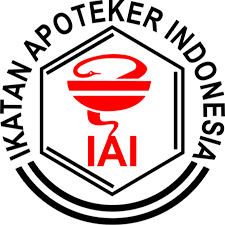Rungia pectinata (Linn.) Nees: A Review of Phytochemical Analysis and Pharmacological Activities
Md. Shaekh Forid(1*), Muhammad Saupi bin Azuri(2), Wan Maznah Wan Ishak(3), Md. Sanower Hossain(4)(1) Faculty of Chemical & Process Engineering Technology, Universiti Malaysia Pahang Al-Sultan Abdullah, Lebuhraya Tun Razak,26300 Gambang, Kuantan, Pahang Darul Makmur, Malaysia
(2) Faculty of Chemical & Process Engineering Technology, Universiti Malaysia Pahang Al-Sultan Abdullah, Lebuhraya Tun Razak,26300 Gambang, Kuantan, Pahang Darul Makmur, Malaysia
(3) Faculty of Chemical & Process Engineering Technology, Universiti Malaysia Pahang Al-Sultan Abdullah, Lebuhraya Tun Razak,26300 Gambang, Kuantan, Pahang Darul Makmur, Malaysia
(4) Centre for Sustainability of Mineral and Resource Recovery Technology (Pusat SMaRRT), Universiti Malaysia Pahang Al-Sultan Abdullah, Kuantan, Malaysia
(*) Corresponding Author
Abstract
Keywords
Full Text:
PDFReferences
Harborne, J.B., 1984. Methods of plant analysis. In Phytochemical methods: a guide to modern techniques of plant analysis (pp. 1-36). Dordrecht: Springer Netherlands.
Indian Biodiversity Portal , updated on 2014, (https://indiabiodiversity. org/species/ show/ 231026.
Jaiswal, A.G., 2017. Check list of medicinal plants from Navapur, district Nandurbar (Maharashtra State), India. Journal of Medicinal Botany, 1, pp.29-32.
Kainsa, S. and Bhoria, R., 2012. Medicinal plants as a source of anti-inflammatory agent: a review. International Journal of Ayurvedic and Herbal Medicine, 2(3), pp.499-509. https://doi.org/10.20531/tfb.2020.48.1.11.
Lin, Z., Huang, S. and Deng, Y., 2019. The complete chloroplast genome of Rungia pectinata (Acanthaceae). Mitochondrial DNA Part B, 4(2), pp.2736-2737. https://doi.org/10.1080/ 23802359.2019.1644216.
Nadkarni, K.M., Nadkarni, A.K., 2002. Indian Materia Medica. Vol. 1. Mumbai: Popular Prakashan;1081.
Pandey, L.K. and Sharma, K.R., 2022. Analysis of Phenolic and Flavonoid Content, α-Amylase Inhibitory and Free Radical Scavenging Activities of Some Medicinal Plants. The Scientific World Journal, 2022. https://doi.org/10.1155/ 2022/4000707.
Padal, S.B., Ramakrishna, H. and Devender, R., 2012. Ethnomedicinal studies for endemic diseases by the tribes of Munchingiputtu Mandal, Visakhapatnam district, Andhra Pradesh, India. International Journal of Medicinal and Aromatic Plants, 2(3), pp.453-459.
Rahman, M.A., 2018. Plant diversity in Hazarikhil Wildlife Sanctuary of Chittagong and its conservation management. Journal of Biodiversity Conservation and Bioresource Management, 3(2), pp.43-56.
Rahman, A.H.M.M., 2013. Assessment of Angiosperm Weeds of Rajshahi, Bangladesh with emphasis on medicinal plants. Research in Plant Sciences, 1(3), pp.62-67.
Rahhal, B., Hattab, S., Jaradat, N., Basha, W., Al Zabadi, H., Zyoud, A., Taha, I., Najajreh, I. and Ghanim, M., 2021. Phytochemical investigation and diuretic activity of the Palestinian rataegus aronia in mice using an aqueous extract. Palestinian Medical and Pharmaceutical Journal, 7(2), p.4.
Rueangsawang, K., Suddee, S., Chantaranothai, P. and Simpson, D., 2020. A synopsis of Rungia (Acanthaceae) in Thailand. Thai Forest Bulletin (Botany), 48(1), pp.61-71.
Saha, D., Sarma, T.K. and Mukherjee, S.K., 2016. Some medicinal plants of North 24 parganas district of West Bengal (India). Int. J. Pharm. Biol. Sci, 6(3), pp.191-206.
Sarkar, A.K., Dey, M. and Mazumder, M., 2017. Ecological status of medicinal plants of Chalsa forest range under Jalpaiguri division, West Bengal, India. International Journal of Herbal Medicine, 5(5), pp.196-215.
Sinha, B.N., Swain, S.R. and Murthy, P.N., 2008. Evaluation of anthelmintic activity of Rungia pectinata (Linn.) Nees. Phytopharmacology and Therapeutic Values III, pp.415-419.
Sivak, K.V. and Kaukhova, I.E., 2021. Evaluation of the diuretic effect of crude ethanol and saponin-rich extracts of Herniaria glabra L. in rats. Journal of Ethnopharmacology, 273, p.113942.
Singh, S., Karwadiya, J., Srivastava, S., Patra, P.K. and Venugopalan, V.P., 2022. Potential of indigenous plant species for phytoremediation of arsenic contaminated water and soil. Ecological Engineering, 175, p.106476.
Swain, S.R., Sinha, B.N. and Murthy, P.N., 2008. Antiinflammatory, diuretic and antimicrobial activities of Rungia pectinata Linn. and Rungia repens Nees. Indian Journal of Pharmaceutical Sciences, 70(5), p.679.
Shekhawat, M.S., Manokari, M. and Ravindran, C.P., 2016. Micropropagation, micromorphological studies, and in vitro flowering in Rungia pectinata L. Scientifica, 2016. https://doi.org/10.1155/2016/5813851.
Zhao, L., Tao, J.Y., Zhang, S.L., Jin, F., Pang, R., Dong, J.H., Guo, Y.J. and Ye, P., 2008. Anti-inflammatory mechanism of Rungia pectinata (Linn.) Nees. Immunopharmacology and Immunotoxicology, 30(1), pp.135-151.
Zhang, Y., Gao, J., Mi, F., Gao, P. and Lai, P., 2016. Chemical composition and antioxidant activity of the essential oil of the whole plant of Rungia pectinata. Journal of Essential Oil Bearing Plants, 19(4), pp.1043-1046.
Article Metrics
Abstract view(s): 1037 time(s)PDF: 539 time(s)
Refbacks
- There are currently no refbacks.








